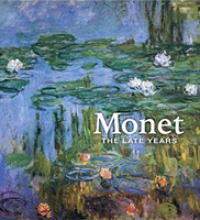- ホーム
- > 洋書
- > 英文書
- > Business / Economics
基本説明
New in paperback. Hardcover was published in 2005. A YBP Library Services Current Bestselling Professional Title (July 2005). One of Choice's outstanding academic titles for 2005. A top World Bank economist analyzes income distribution worldwide using, for the first time, household survey data from more than 100 countries.
Full Description
We are used to thinking about inequality within countries--about rich Americans versus poor Americans, for instance. But what about inequality between all citizens of the world? Worlds Apart addresses just how to measure global inequality among individuals, and shows that inequality is shaped by complex forces often working in different directions. Branko Milanovic, a top World Bank economist, analyzes income distribution worldwide using, for the first time, household survey data from more than 100 countries. He evenhandedly explains the main approaches to the problem, offers a more accurate way of measuring inequality among individuals, and discusses the relevant policies of first-world countries and nongovernmental organizations. Inequality has increased between nations over the last half century (richer countries have generally grown faster than poorer countries). And yet the two most populous nations, China and India, have also grown fast. But over the past two decades inequality within countries has increased. As complex as reconciling these three data trends may be, it is clear: the inequality between the world's individuals is staggering.
At the turn of the twenty-first century, the richest 5 percent of people receive one-third of total global income, as much as the poorest 80 percent. While a few poor countries are catching up with the rich world, the differences between the richest and poorest individuals around the globe are huge and likely growing.
Contents
Acknowledgments vii Prologue: The Promise of the Twentieth Century 1 Introduction: A Topic Whose Time Has Come 3 PART I: SETTING THE STAGE Chapter 1: The Three Concepts of Inequality Defined 7 Chapter 2: Other Differences between the Concepts 12 Chapter 3: International and World Inequality Compared 20 PART II: INEQUALITY AMONG COUNTRIES Chapter 4: Rising Differences in Per Capita Incomes 31 Chapter 5: Regional Convergence, Divergence, or ... "Vergence" 45 Chapter 6: The Shape of International GDP Per Capita Distribution 51 Chapter 7: Winners and Losers: Increasing Dominance of the West 61 PART III: GLOBAL INEQUALITY Chapter 8: Concept 2 Inequality: Decreasing in the Past Twenty Years 85 Chapter 9: High Global Inequality: No Trend? 101 Chapter 10: A World without a Middle Class 128 PART IV: CONCLUDING COMMENTS Chapter 11: The Three Concepts of Inequality in Historical Perspective 139 Chapter 12: Why Does Global Inequality Matter and What to Do about It? 149 Appendixes 1-7 163 Notes 195 References 213 Index of Authors 223 Index of Subjects 225








